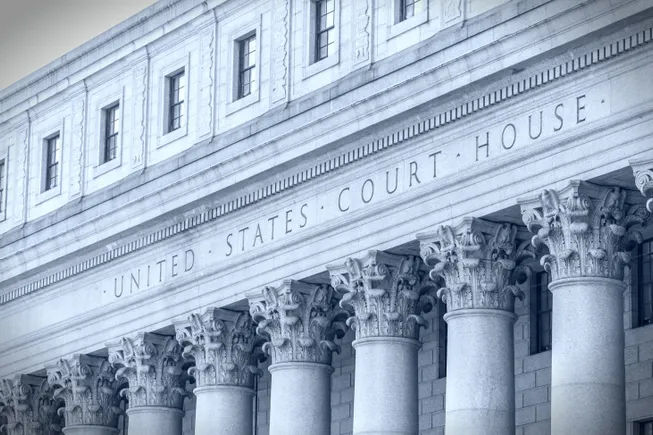Uncertainty continues to plague infrastructure and climate projects as federal agencies defy court orders telling them to disburse funding. Federal contractors are navigating the fallout — including paused and terminated work — as Trump’s directive to halt federal money continues to be challenged in court.
President Donald Trump’s Jan. 20 “Unleashing American Energy” order told federal agencies to stop paying out Infrastructure Investment and Jobs Act and Inflation Reduction Act funds. Although courts halted the directive, federal agencies have continued to implement the freeze while they review projects for compliance with the new administration’s agenda.
For example, the Washington DOT has seen money halted for bridge work and court-mandated culvert replacement efforts, among other programs, the Washington State Standard reported.
In a high-profile case, newly appointed Transportation Secretary Sean Duffy ordered a review of the California High-Speed Rail Authority’s compliance with the terms of some of its federal agreements, Mass Transit reported, imperiling $4 billion in federal funding for the project.
A federal judge heard arguments on Feb. 21 about whether to further block the Trump administration from freezing trillions of dollars in federal grants and other spending, in a lawsuit brought by 22 attorneys general, NPR reported.
Agencies defy orders to dole out funds
Two lawsuits blocked an Office of Management and Budget memo implementing Trump’s order via temporary restraining order on Jan. 29. However, federal agencies have continued to implement the freeze, arguing the temporary restraining order rulings have a limited scope, said Jackie Unger, partner and Government Contracts Group lead at Washington, D.C.-based law firm PilieroMazza, during a Feb. 12 webinar.
“Agencies continue to freeze funds, they’ve refused to resume disbursement of appropriated funds and they’ve continued to issue stop work orders and terminate contracts,” Unger said.
The judge in the Feb. 21 case subsequently said that the agencies’ actions violated his temporary restraining order and clarified the scope, NBC reported, explaining that it prohibits all freezes in obligated funding based on OMB’s memo and Trump’s executive order.
“The clarification may give contractors the ability to challenge agency actions in response to the executive orders, if they’re seeing impacts from those,” Unger said.
The government has appealed the temporary restraining orders up to the First Circuit Court of Appeals, per Unger, but the courts have so far rejected requests for an immediate stay, which would have allowed the funding freeze to go back into effect. As the issue works its way through the legal system, the precise implications of Trump’s order may not be fully understood for months.
In the meantime, here are some steps that civil contractors can take if they are facing orders to stop work.
Dealing with stop work orders
A federal contracting officer can tell contractors via written order to stop work at any time, typically under the Federal Acquisition Regulation 52.242-15 clause, for a 90-day window, said Lauren Brier, partner at PilieroMazza, in the webinar. The officer can extend that period, but they must have reasonable justification and it has to be agreed upon by both parties, so contractors can push back.
Contractors are entitled to standby costs, which are overhead or costs that directly result from the stop work order, but they must also mitigate the situation by furloughing employees, communicating on lease costs and demobilization on jobsites, for example.
“Once a stop work order is issued, the contractor has an immediate duty to mitigate costs,” Brier said. “You can’t just have people sitting on your payroll for the 90-day period and expect the government to make that payment.”
The contracting officer is required to make an equitable adjustment in the delivery schedule and contract price, Brier said. Requests for equitable adjustment are typically due within 30 days of the lift of the stoppage and may include items such as attorney’s fees, administrative costs and internal costs.
However, “there’s no regulatory requirement for the government to respond, so they can sit on that,” Brier said.
In light of that potential delay, she offered some best practices for dealing with stop work orders:
- Immediately inform your contracting officer of your intention to file a request for equitable adjustment.
- Begin working to mitigate costs and record proof of mitigation.
- Document efforts to implement stop work.
- Consider filing a claim in lieu of a request for equitable adjustment to ensure timely processing of the cost request.
“Another thing that we are suggesting clients do is when they receive a stop work notice, that they reserve their right to challenge the high-level directive to stop work,” Brier said. “Because a lot of these courts are starting to determine these funding freezes as illegal or unlawful, potentially these stop works that are flowing from these executive orders are similarly unlawful.”














